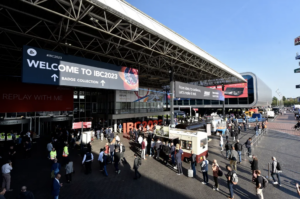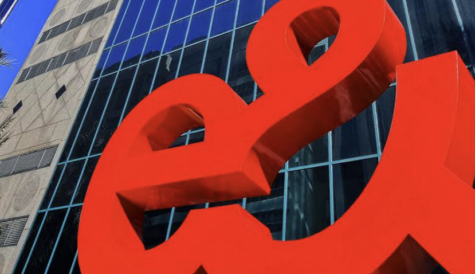Impressions of IBC
 This year’s IBC show, which drew to a close on September 18, reflected, as one might expect and hope, the state of industry it serves. It is no reflection on IBC that the industry is in the doldrums. Cord-cutting and cost-cutting have been the lot of old-style pay TV operators and new-style streamers respectively over the last couple of years. In this environment, investment in new technologies and upgrades has been somewhat muted.
This year’s IBC show, which drew to a close on September 18, reflected, as one might expect and hope, the state of industry it serves. It is no reflection on IBC that the industry is in the doldrums. Cord-cutting and cost-cutting have been the lot of old-style pay TV operators and new-style streamers respectively over the last couple of years. In this environment, investment in new technologies and upgrades has been somewhat muted.
In fact, the parts of the IBC show floor that cover technologies related to the distribution of video to consumers – from the headend to the home in the old pay TV world, a phrasing largely rendered obsolete by direct-to-consumer streaming – were busy enough. But it was noticeable that there was no big development to generate buzz, such as UHD TV or virtual reality in years gone by. (And we all remember the couple of years when 3D displays were the must-have accessory on all booths).
The partial exception this year was a widespread interest in the potentially transformative impact of AI. But it’s still too early to gauge how far and how fast large language model algorithms are going to change the industry, or where they will start to make their presence felt first.
In general, AI is likely at least to speed up the cycle of development by speeding up the process of code generation. New ideas will be transformed into real products more quickly than before. R&D will accelerate.
Generative AI will undoubtedly fuel innovation in many unforeseen areas. In specialist areas, a company such as Dubformer (also present at IBC) is helping transform the economics of content localisation through the use of AI dubbing. And that is only one example.
Advertising spend
There are of course several key themes that played into which technologies achieved prominence at this year’s show, including applications of AI. One is the renewed emphasis on monetisation (as opposed to the land-grab for subscribers that characterised the streaming world a couple of years ago). For most that means advertising. And advertising means FAST.
Service providers – always a core target market for many exhibitors at this show – are increasingly looking to build an advertising play, adding FAST channels to their super-aggregated array of premium apps and seeking ways to capture a share of the revenue.
The challenges that stand in the way of achieving success here include ensuring that content is discoverable by those who might be interested in viewing it (as well as those interested in advertising against it). There is a problem of lack of consistency of metadata between different providers, which has an impact on aggregators relying on multiple sources for their data. Generative AI can be enrolled in the task of creating metadata and, in particular, to help deliver consistency and a common structure for that metadata. Companies pushing this idea at IBC included the likes of 24i.
AI could also potentially help with another problem – the unwillingness of content providers to share user behaviour data (rather than content metadata) – which would enable operators to create more personalised services. Operators therefore need to tap the user data they do control and map that onto content from their application partners in order to deliver the truly personalised experience they believe will help transform their relationship with subscribers.
Advertising technologies have been noticeable by their prominence at IBC and other trade shows over the last couple of years, and interest in advertising as a revenue source is only set to grow. In addition to developments like FAST (expanding the available inventory), there is renewed interest not only in addressability to up CPMs but in integrating digital and linear platforms to provide a unified advertising offering. Companies active in other parts of the chain such as Synamedia were keen to promote their ad-tech at IBC (in this cases, standalone server-side ad insertion).
Programmatic trading is one element of the integrated advertising vision but not the whole story. As interest grows in connected TV as a vehicle for targeted advertising around premium content, there is some scepticism over whether the adoption of programmatic trading makes sense, even if it does strip out costs. A combination of traditional upfronts, ‘closed’ programmatic markets and open programmatic trading at the bottom of the pyramid are likely to define the future, so products that handle all of these are necessary.
IP video – live and on-demand
Despite the dive in confidence from big streamers over the last year or so, streaming itself still represents for many the future of video distribution. There is a continued interest in live-streaming to supplement on-demand consumption of, for example scripted content as the big streamers look to re-aggregate their own offerings to develop a ‘big bundle’ that includes live sports as well as on-demand drama (in effect streaming is looking to replicate the once-successful pay TV model in a new form).
Delivering live sports to a mass audience over the internet remains challenging. Companies including Broadpeak have been pushing multicast ABR as a solution, while there is a general interest in building more capacity at the edge of networks, something endorsed at IBC by Mainstreaming, like Broadpeak a technology partner of DAZN.
Innovations in video processing meanwhile continue apace, squeezing more, or higher quality video into a smaller space. Again, however, the industry is open to a reality check. While much attention has been given to the potential of next-generation codecs, a company such as VisualOn used IBC to highlight the need to address the vast footprint of HEVC/H.264 devices that are out in the field and will not be going away anytime soon as service providers look to sweat their assets. While high-end encoder providers promote their live encoding credentials, VisualOn promises a way to drastically reduce the bandwidth necessary to deliver HEVC video for on-demand consumption – increasing all the time as a proportion of the total – by close analysis of he video on a frame-by-frame basis.
Allied to technologies that enable the delivery of video over IP more efficiently are solutions that enable operators to control costs by sharing resources. Software-as-a-service, platform-as-a-service and TV-as-a-service are increasingly prominent points of reference. Synamedia’s acquisition of Quortex to give it a multitenant video processing solution is an example at one end of the video distribution ecosystem. Multitenant white-label streaming platforms can also help small and medium sized service providers and rights holders launch streaming services with the kind of advanced UX and functionality now seen as a baseline by subscribers to Netflix.
Sustainable technologies
What else from this very impressionistic tour of the show? Another key theme evident at the Rai was sustainability. Allied to the renewed drive to cut costs, this spans energy efficiency across the board, an increased emphasis on the use of recycled materials to build mass market devices such as set-tops and remote controls and the use of advanced technology to distribute content, for example via content-aware CDNs, as advertised by the likes of Broadpeak.
Also present at IBC, remote control provider Ruwido, which has just announced a deal with Bouygues Telecom to deliver remote controls entirely recycled from the casing of cast-off older generation remotes, showcased its innovations in this area in a booth entirely made from recycled carton.
It is also worth remembering that trends in video distribution do not always move at the speed of lightning, and in a cost-conscious world technologies that many believed to be obsolete are being given a new lease of life through innovation. Far from the world of direct-to-consumer streaming, companies that also focus on more traditional ways of distributing video are also reinventing themselves. Satellite operator Intelsat highlighted the potential of a combination of advanced software-defined satellites and 3D-printed small satellites to give new life to geostationary orbit constellations, while cable technology specialist Teleste highlighted the fact that, despite the interest in IP video, a technology such as DVB-C is likely to continue to dominate cable video for some time, with operators even overlaying DVB-C on fibre, leading to a need for technologies such as the company’s Luminato platform to evolve by converting internet-delivered channels for broadcast distribution.
There may have been no single unifying theme to this year’s IBC, but patching together the different narratives of exhibitors adds up to more than the sum of the parts. Service providers and streamers alike are looking for technologies that work to deliver their business goals in a world where achieving that is becoming more, rather than less, challenging.



